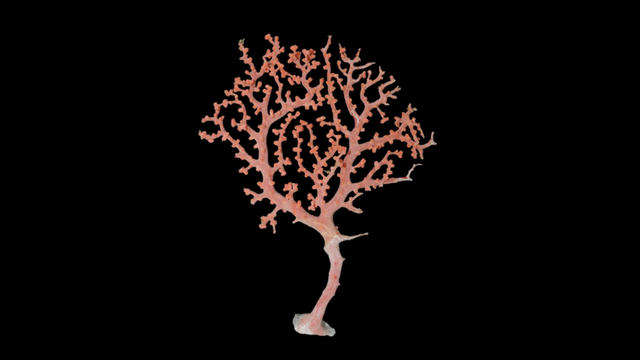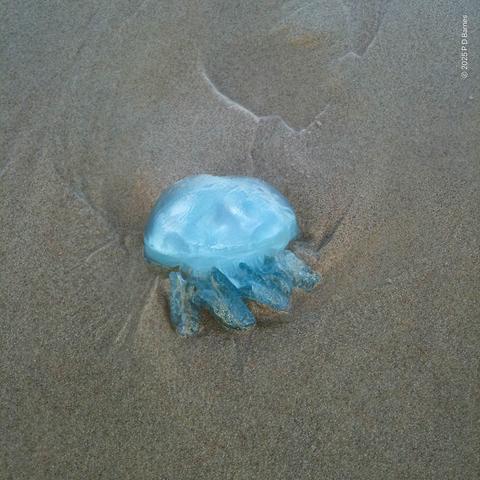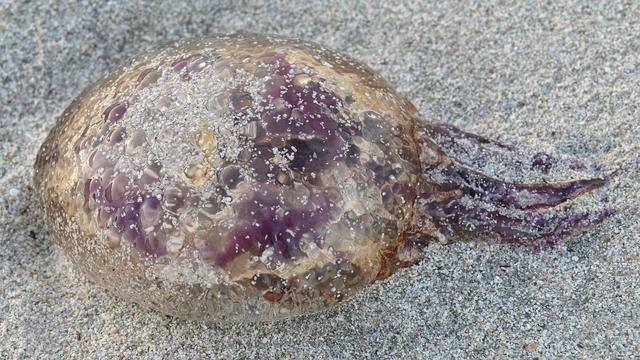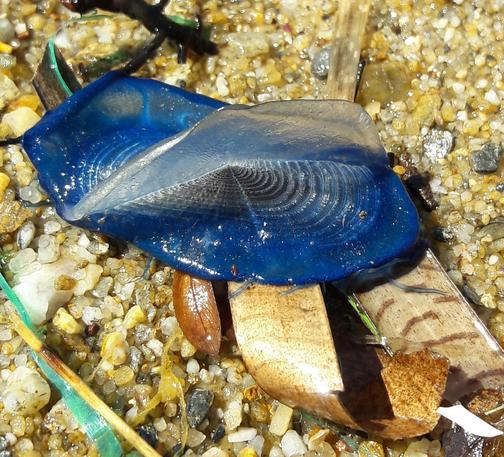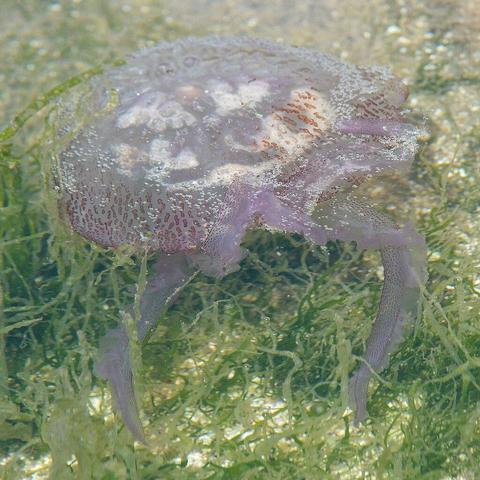#Vélelle
Velella velella
20 avril 2017 - Île de Port-Cros, Hyères, France
#Cnidaria >
#Hydrozoa >
#Anthoathecata >
#Porpitidae
Velella velella est une espèce de cnidaire pélagique. Elle est souvent appelée « vélelle à voile » ou « by-the-wind sailor » en anglais.
Il s'agit d'une colonie de Polypes, généralement de moins de 10 cm de long, qui se présente sous la forme d’un flotteur chitineux ovale en forme d’anneau et composé de chambres remplies d’air qui lui permettent de flotter à la surface de l’océan. Surmontée d’une voile triangulaire translucide haute de 3 cm maximum, la colonie se déplace principalement grâce au vent, sa voile étant orientée en biais pour capter le vent et propulser l’organisme, sans capacité de mouvement autonome.
La colonie est composée de polypes spécialisés : nourriciers, reproducteurs, défensifs.
Cette espèce est présente dans tous les océans du globe, notamment dans les zones tropicales et subtropicales, y compris en Méditerranée. Elle peut également remonter le long des côtes, notamment en Europe.
On la trouve fréquemment échouée en masse sur les plages, notamment après des tempêtes, au printemps et en début d’été.
La colonie se nourrit de plancton et de petits organismes marins, capturés à l’aide de tentacules urticants.
Dangerosité : Généralement considérée comme sans danger pour l’homme, ses tentacules ne sont pas assez longs pour blesser, bien que certaines personnes sensibles puissent réagir à ses piqûres.
Autres noms :
« barquette de la Saint-Jean » (Biarritz)
« méduse-voilette »
« velero » (espagnol)
« Jack-sail-by-the-wind » (anglais)
#wildlife #nature #naturephotography #biodiversity #ecosystem #écosystème
#smartphonephotography #hydrozoa #polype 